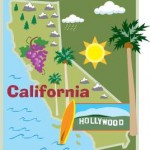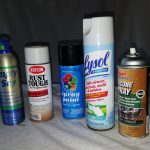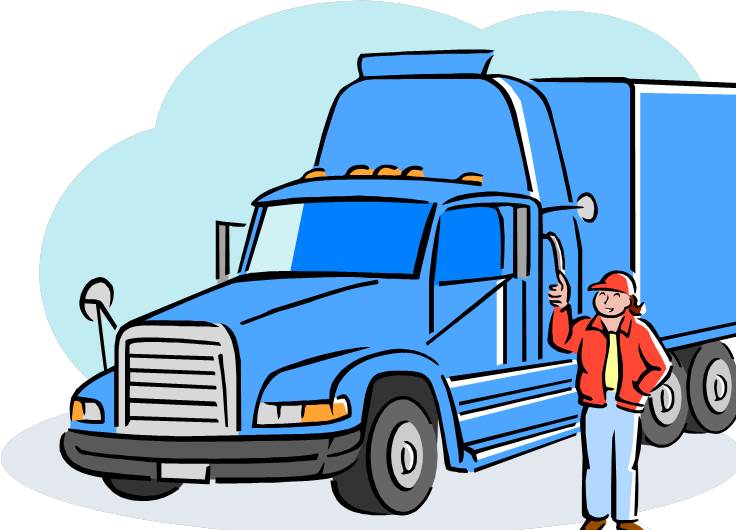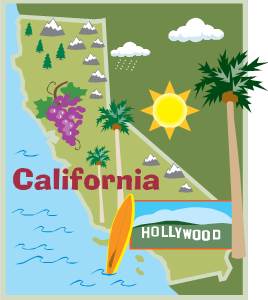
The Federal regulations of the USEPA at 40 CFR 273 identify four types of universal waste:
- Lamps
- Batteries
- Mercury-containing equipment
- Recalled or cancelled pesticides
States that choose to operate their own authorized hazardous waste program may retain these four, slightly revise their names and definitions, and even add to this list creating state-specific universal waste.
The California Department of Toxic Substances and Control (DTSC) regulates the management of seven (7) types of universal waste, six of them in Title 22, Division 4.5, Chapter 23 of the California Code of Regulations (CCR):
- Batteries
- Electronic devices
- Mercury-containing equipment
- Lamps
- Cathode ray tubes
- Cathode ray tube glass
And one more in the California Health and Safety Code (HSC) at 25201.16:
- Aerosol cans
USEPA regulations identify four types of facilities involved in the management of universal waste:
- Large Quantity Handler – a generator of universal waste or one who receives universal waste from other universal waste handler, accumulates universal waste, and sends universal waste to another universal waste handler, to a destination facility, or to a foreign destination and accumulates 5,000 kilograms or more of universal waste at any time.
- Small Quantity Handler – a generator of universal waste or one who receives universal waste from other universal waste handler, accumulates universal waste, and sends universal waste to another universal waste handler, to a destination facility, or to a foreign destination and does not accumulate 5,000 kilograms or more of universal waste at any time.
- Transporter – a person engaged in the off-site transportation of universal waste by air, rail, highway, or water.
- Destination Facility – a facility that treats, disposes of, or recycles universal waste.
The DTSC identifies only the following regulated entities under its Universal Waste Rule:
- Transporter – a person engaged in the off-site transportation of universal waste by air, rail, highway, or water.
- Destination Facility – a facility that treats, disposes of, or recycles universal waste.
- Universal Waste Handler – a generator of universal waste or one who receives universal waste from other universal waste handler, accumulates universal waste, and sends universal waste to another universal waste handler, to a destination facility, or to a foreign destination.
Contact me with any questions you may have about the generation, identification, management, and disposal of hazardous waste Daniels Training Services 815.821.1550 |
Note that the DTSC does not identify a Small Quantity Handler nor a Large Quantity Handler of universal waste. It does, however, identify two different types of “generators” which are included in the definition of a universal waste handler:
- Conditionally Exempt Small Quantity Universal Waste Generator (CESQUWG)
and…
- Household (aka Household Universal Waste Generator)
CESQUWG:
- Generates ≤100 kg (220 lbs) of RCRA hazardous waste and ≤1 kg (2.2 lbs) of acutely hazardous waste per calendar month. This includes universal wastes that are a RCRA hazardous waste.
- Complies with the Federal regulations of the USEPA at 40 CFR 261.5 for a Conditionally Exempt Small Quantity Generator of hazardous waste.
A RCRA hazardous waste is a waste that matches the Federal USEPA criteria for a listed or characteristic hazardous waste.
Household:
- Single detached residence or a single unit of a multiple residence unit and all structures belonging to the household.

This California hotel is not a “household” for the purposes of the Universal Waste Rule. It does not include a hotel, motel, bunkhouse, ranger station, crew quarters, campground, picnic ground, or day-use recreation facility.
DTSC specifically excludes hotel, motel, bunkhouse, ranger station, crew quarters, campground, picnic ground, or day-use recreation facility from the definition of a household because those sites are included in the Federal USEPA Household Hazardous Waste Exclusion at 40 CFR 261.4(b)(1).
These two types of a universal waste handler are important because they are both subject to an exemption (at 66273.8, Title 22 of the CCR) from full regulation as a universal waste handler; in other words, they don’t have to comply with all of the regulations that a non-exempt universal waste handler must. Though these exemptions are addressed separately in the CCR, the conditions to which each generator is subject are the same. Therefore, the conditions required to comply with either the household universal waste generator exemption or the conditionally exempt small quantity universal waste generator exemption are described below.
- The generator must not dispose of the universal waste.
- The universal waste is relinquished to one of the following:
- Another universal waste handler.
- A universal waste transporter (e.g. for curbside collection).
- A destination facility.
- An authorized curbside household hazardous waste collection program.
- Generator does not treat the universal waste, except as summarized below. Allowed treatment of universal waste by an exempt generator includes:
- Sorting batteries by type.
- Mixing battery types in one container.
- Discharging batteries to remove charge.
- Regenerating used batteries.
- Disassembling batteries or battery packs into individual batteries or cells.
- Removing batteries from consumer products.
- Removing electrolyte from batteries.
- Remove a lamp from a product or structure.
- A CESQUWG may remove mercury batteries from mercury-added novelties.
- Any other treatment of a mercury-containing device, such as remove ampules and mercury switches, drain pressure or vacuum gauges containing mercury, must comply with universal waste handler treatment requirements of §66273.70 -§66273.77 and the applicable management requirements for that mercury-containing equipment.
- Remove discrete assemblies (e.g. batteries, ink cartridges) from electronic devices which are typically removed for replacement during normal operation.
- Remove CRTs from electronic devices in a manner that prevents breakage of CRT.
- Dismantle or otherwise manually segregate components (e.g. circuit boards, integrated circuits, metals, plastic, wiring, batteries, lamps, &etc.) from an electronic device.
- Remove the yoke from a CRT without breaking the CRT glass.
Each of the above allowed treatment comes with their own conditions that must be complied with in order to conduct the activity.
- Any material produced from treatment of universal waste are properly classified and managed according to DTSC regulations.
And that’s it! A household universal waste generator or CESQUWG need only ensure proper off-site disposal of their universal waste, take some basic precautions for it’s on-site management, and comply with the requirements for its treatment if they choose that option.
Daniels Training Services 815.821.1550 |
What, then, is a household universal waste generator or a CESQUWG exempt from? Well, a brief list of the requirements of a universal waste handler includes:
- Immediately contain all releases of universal waste and determine if the release is a hazardous waste and manage appropriately.
- Label and mark universal waste containers.
- Obtain an EPA Identification number (unless already have one) if accumulate 5,000 kg or more on-site at any time.
- Accumulate universal waste on-site for no more than one year.
- Demonstrate amount of time universal waste has been on-site.
- Universal waste must be shipped only to another universal waste handler, a destination facility, or a foreign destination.
- Off-site shipments of universal waste need not be described on a Uniform Hazardous Waste Manifest but some form of record must be kept of all shipments received or shipped off-site.
- Train all personnel who manage universal waste.
- Notify DTSC 30 days prior if intend to accept and accumulate universal waste CRTs, CRT glass or electronic devices from off-site sources.
- Submit annual report by February 1 for previous calendar year if accept >100 kg of CRTs, CRT glass, or electronic devices from off-site locations or generate 5,000 kg or more of CRTs, CRT glass, or electronic devices in a calendar year.
- Other on-site management requirements specific to each type of universal waste.
The pictures below are not a violation for a CESQUWG in California:
Question:
Are universal waste aerosol cans subject to the exemptions of 22 CCR 66273.8?
Answer:

No. HSC 25201.16(d)(2) makes it clear, “The exemptions described in Chapter 23 (commencing with Section 66273.1) of Division 4.5 of Title 22 of the California Code of Regulations for universal waste generated by households and conditionally exempt small quantity universal waste generators of universal waste do not apply to universal waste aerosol cans.”
Generators of hazardous waste in California have many incentives to manage their hazardous waste under the universal waste option. One is this:
Effective January 1, 2016 universal waste is no longer required to be included when determining the status of a hazardous waste generator. View the DTSC’s rescinded letter of interpretation which had required universal waste to be included when determining hazardous waste generator status.
Please contact me if you have any questions about the Universal Waste Rule in California or the training you must provide for personnel who manage universal waste at your facility.
Daniels Training Services 815.821.1550 |




